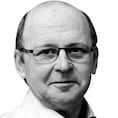Life-support systems that nature provides – an intertwined web that sustains humans, plants and animals – are at risk of unravelling in a matter of decades.
Deforestation, intensive agriculture, overfishing, development and other human activities are breaking the bonds that combine to make a healthy planet. Their destruction, fuelled by rampant consumption and obsession with economic growth, is accelerating.
“The evidence is crystal clear: nature is in trouble. Therefore we are in trouble,” declared Sandra Díaz, who co-chaired the completion of a global assessment of biodiversity published this week.
The main factors causing species loss are 'eroding the foundations of our economies, livelihoods, food security, health and quality of life worldwide'
There is a dual threat to life on Earth: species loss and climate change. The Intergovernmental Science-Policy Platform on Biodiversity and Ecosystem Services (IPBES) ranked the main factors causing species loss: changes in land and sea use; exploitation of organisms; climate change; pollution; and invasive alien species.
These are “eroding the foundations of our economies, livelihoods, food security, health and quality of life worldwide”, and climate breakdown could soon become the main driver.
Nature is being destroyed at such a rate that a million species are at risk. On the day the IPBES report made headlines, Dr Allan Mee of the Golden Eagle Trust checked for sightings of the Ring Ouzel in the MacGillycuddy's Reeks in Co Kerry, one of just two of its remaining habitats in Ireland. "No birds located. Sad but likely witnessing local extinction of the species, once found in 28 Irish counties," he tweeted. Pádraic Fogarty of the Irish Wildlife Trust replied: "This is mass extinction unfolding before our eyes."
How is the potentially lethal cocktail of biodiversity loss and climate disruption going to impact on coming generations in contrasting parts of the globe? Equally, what does it mean for an animal that dominates the Irish landscape (the cow), and the majestic lion, not critically endangered yet rapidly disappearing?
The baby born in Ireland
Conscious of what the next generation is facing, Australian Jim Scheer helped set up the FridaysForFuture climate action movement in Ireland, which is driven by young people. As for the babies of today, "their freedom is limited", he believes. As a child, "the most I had to worry about was, 'is there air in the tyres of my bike?'" he says.
They are facing a whole different world of realities, a place where the First World problem of “where will I go on my holidays?” may be replaced by “where is my next meal coming from?”
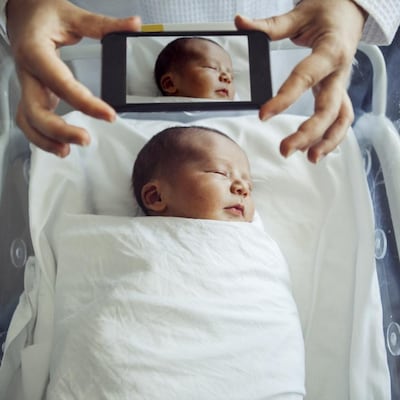
The issues weigh heavily on the current generation of young people, he believes, which is why “coming together to grieve” – a feature of recent protests – matters, and is part of telling the truth. There is much frustration too at the inaction of elders.
"Uncertain" is the future of that child, says climate activist Dr Lorna Gold. Hope is emerging through the climate movement but, looking at the timelines required for transformational shift, there is "more and more uncertainty".
Children growing up in Ireland will be relatively protected, by location, wealth and assets they will have access to, “but even in the best-case scenario, it will be a diminished world.”
This will be due to loss of species and a more complicated world, disrupted by climate and associated conflict, where Dr Gold fears the freedom to explore and travel in relative peace is undermined. It’s a place of learning from the internet rather than real life. The pluses will be better local connectedness with “their own earth” and nearby food production.
By mid-century, most of us live in green cities with an almost total absence of the private car
That Irish child will never hear the corncrake or the curlew, says climatologist Prof John Sweeney, and, as they grow, they will be confronted with hard choices on lifestyle and mobility. The fossil fuel-driven car will be forced out by regulation, he says, but different ways of getting off the island, for example, will be needed if aviation does not overcome its emissions issues.
By mid-century, most will live in green cities with an almost total absence of the private car. The transport revolution will be in urban areas but slower to come to the countryside until battery technology improves, Sweeney notes.
A near zero-carbon world will mean less air pollution. Clean energy in their home and workplace will mainly come from offshore wind.
A downside will be more extreme weather events attributable to climate change; more intense storms and rainfall, increased flooding with sea level rises – and yet water shortages in summer.
The child born today in Ireland – and the adult they become – will cope far better than their counterpart elsewhere.
The developing world baby
A baby born today in a developing country, on the other hand, will be at the frontline of climate disruption, says Christian Aid Ireland policy and advocacy adviser Jennifer Higgins. They will have to contend with stronger cyclones, warmer days and nights, more unpredictable rains and longer heatwaves.
"Here in Ireland we will have the resources and ability to adapt and deal with these unprecedented weather events, but in many parts of the world, going to Tesco to stock up on sliced pan won't be a possibility."
They will be the ones who will suffer the worst consequences of our inaction on climate change. “Sustained periods of unseasonably heavy rain can have a damaging impact on agriculture, causing the loss of topsoil and serious nutrient leaching,” says Higgins.
In Ireland, save for the odd hosepipe ban, water is always on tap for domestic, industrial and agricultural use. “But in the developing world, where most people depend on agriculture to earn a living or just stay alive, it’s a scarce and precious resource.”
Those living in coastal regions will suffer a loss of coral reefs, which half a billion people rely on for fish. For those born among indigenous communities in tropical rainforests, not only will they lose their homeland – already being eroded by increasing industrialisation – but there will be loss of habitat that acts as the lungs of the earth and regulates rainfall.
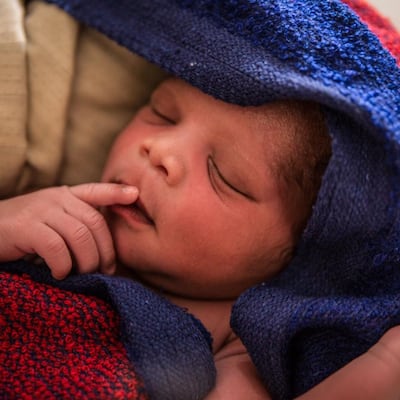
Children will be most susceptible to the increasing diseases that a changing climate will leave in its wake, she adds. Their education may be disrupted when schools are used as shelters when disaster hits their communities.
If temperatures increase in already hot areas, it will diminish scarce resources to sustain life and will force many to become refugees.
But this may “dwarf numbers caused by conflict or political and economic necessity. When their land becomes uninhabitable because of drought, flood or sea-level rise, they will have to seek a safer place to live,” Higgins predicts.
It may be a world where techniques such as conservation agriculture transform crop production and smartphone technology helps drive rural economies backed by deployment of cheap solar PV. But extreme weather events will continue to threaten food production, as seen with recent cyclones in southern Africa.
Gold fears a business-as-usual approach means such circumstances can become an intractable problem very quickly, and says solutions are beyond most communities on cost grounds. Therefore the child is facing increased malnutrition, chronic hunger, dependency on external aid, and political instability – an existence marked by inequality and injustice.
The IPBES report starkly outlines how indigenous peoples and the poorest are most reliant on land and sea for survival. The combination of land grabs by multinationals facilitated by corrupt governments, extreme climate events and biodiversity loss add up to a very bleak future for their offspring, Gold concludes.
The future of the cow
Humans are not the only beings whose lives will change. The IPBES report emphasises that the effects will be felt first among animals and other living things.
In Ireland, there are currently more cattle than people, and they are the most common large animal. For many, the cow (for beef and milk) is the bellwether of Irish agriculture and rural life. For others, it’s the problem because of associated carbon emissions.
Teagasc's head of communications, Eric Donald, says cattle numbers are currently a matter for individual farmers. With no quotas, no policy instruments are in place. In future we are likely to have fewer beef and more dairy cattle.
On emissions, Donald says there is wide acceptance of the need to implement mitigation measures – a process is already in train.
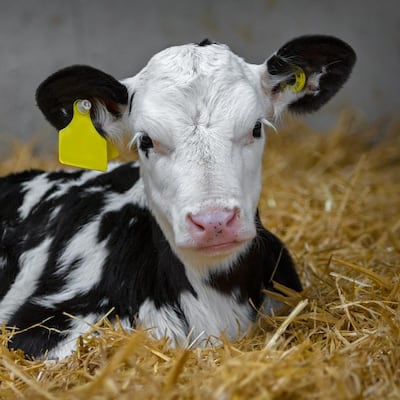
Having a grass-based system to feed those cattle will be critical to sustainable farms from an environmental, economic and social perspective, Donald adds. Ireland will need to find export markets for 80 to 90 per cent of its product. Meat consumption may decrease on an individual basis and there may be a shift to plant-based diets, but increased population growth will mean “demand won’t drop significantly”.
But cattle will have to compete for space due to a more diverse range of crops, land being used for bioenergy and afforestation (increasingly native woodlands and not just on marginal land) that will act as important carbon sinks, and hedgerows ensuring better biodiversity and pollinator capacity.
To question beef consumption may currently be an Irish “no-no”, but the reality is the consumers of tomorrow will be confronted by a wide range of new plant and synthetic proteins that will taste surprisingly good and be cheaper, which is likely to mean less red meat is consumed – in line with health guidelines.
Eric Donald defends the pursuit of higher genetic quality as a means of increasing efficiency and lowering emissions, especially “because lifetime productivity is better”. With extending grazing seasons, it’s the key measure in improving farm sustainability guidelines. It also complements changes in fertiliser use and slurry management.
But John Sweeney says the Irish cow is “reaching limits in terms of genetics”. Like pedigree dogs, they are less able to cope with change and stress compared with native species.
Unquestionably, there will be fewer of them, he believes, “if we want to maintain biodiversity for future generations”.
Expansion in the cattle population has coincided with deterioration in water quality, with widespread glyphosate contamination (one study has found 20 per cent of Irish adults have traces of the herbicide in their urine), nitrates pollution and an emerging ammonia problem.
“Continued expansion of the national herd is not compatible with this report. That’s where the crux comes.”
The future of the lion
Jennifer Higgins joins in a lament for so many endangered mammals.
“Children’s books and toys will become chronicles of extinctions. Most Noah’s Ark toys are full of species that may not survive the Anthropocene [a name for the current, human-dominated geological age]. Lions, tigers, elephants, giraffes etc are among the first animals kids become familiar with in literature and toys. The loss of these great creatures also has an impact on the world they will grow up in.”
Of all species threatened, IWT campaign officer Pádraic Fogarty is shocked by the latest indicators for hippos, giraffes and lions. In particular, “it would be an absolutely travesty if lions were to go extinct . . . The magnificent animal has permeated our culture and imagination, from children’s stories to the pillars on Trafalgar Square.”
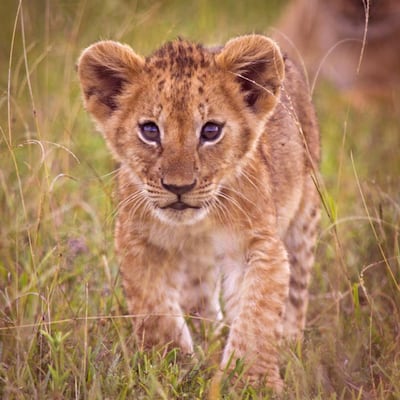
But maps don't lie. In 1950 there were 400,000 lions in the wild. Today there are 23,000-39,000 lions in all of Africa, which is "extremely low" in global terms, when once they lived in Ancient Greece and North Africa, and became extinct in Greece only around 100BC.
Outside of southern Africa, numbers of lions in 23 unfenced reserves in 11 countries are estimated to have dropped by 62 per cent between 1993 and 2014. Asia is home to a small subpopulation in the Indian state of Gujarat, where numbers are growing, but it's just a pin on the globe.
“There is no data to say that lions are about to disappear, but their populations are shrinking fast,” he explains. The species is classified as vulnerable but the slide into the “endangered” and then “critically endangered” categories looms, while “threatened with extinction” is applied to its current status.
For Fogarty, the same pressures apply to other mammals, but the lion’s wellbeing is further undermined by game/trophy hunting and false western-world notions that it is somehow good for population numbers. All told, we are facing a scenario where lions will “shrink to a few corners of the planet”.
What to do
This is not going to be sorted by putting bird tables in back gardens. The Ipbes report shows nature-based solutions can help bring “transformative change”, but there is a greater systemic problem.
In the past 50 years, the human population has doubled, the global economy has grown nearly four-fold, and global trade has grown tenfold, together driving up the demands for energy, food and materials.
Thinking that endless economic growth is possible and not valuing the essential services provided by nature is a delusion leading to catastrophe, Sweeney believes.
“Until we get away from euros and cents and GDP, we will be in a cul-de-sac . . . Unless we rethink how we value the services provided by the natural world and include them explicitly in a wellbeing measure, we delude ourselves that a sustainable future is possible.”
That was the core message in a submission this week to EU leaders meeting on the future of Europe by the European Environmental Bureau (EEB) and more than 200 academics, including John Sweeney, policy experts and civil society groups.
There is an onus too on individuals to act, according to EEB vice president Attracta Uí Bhroin. “It’s not enough for us to sit on the sofa and watch David Attenborough’s latest breathtaking and terrifying documentary and shake our heads. Every politician coming near your front door needs to know environmental sustainability is your priority, and must be Europe’s priority.”
We can't really afford this level of disengagement when we need to be getting on with things
Fogarty hopes people now see the connections between climate breakdown and mass extinction, that they are two sides of the same coin. “We have all of the solutions to hand, but what we’ve been lacking is any sense of urgency to get on with it.”
He senses momentum moving in the right direction, though the lack of a response from the Taoiseach or any Government minister “makes me feel that they are still hoping it’s an issue that will go away. We can’t really afford this level of disengagement when we need to be getting on with things.”
Scheer is brutally frank about future voters born today. “I don’t think people get a choice of what games they play.”
They will have to be focused on survival. “It feels as we have handed them a shitstorm.”
As for the current generation, too many are stuck in business-as-usual mode. There is a need to raise consciousness quickly. “Ignorance is not a choice” given the IPBES report. “It’s not an opinion, it’s scientific. It’s happening.”

